Google Glass: Really Promising or Not So Much?
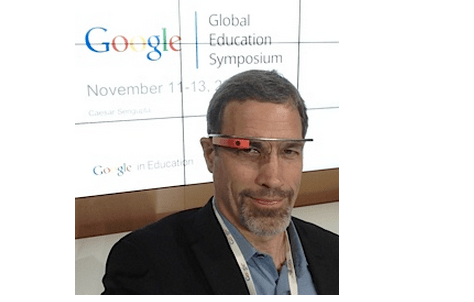
Will Google Glass Transform Learning? Probably not, but after a five minute demo my mind was reeling with potential applications in learning–even more so in healthcare. We reviewed all the proposed applications we could find and rated them Really Promising (RP) or Not So Much (NM). Here’s our list of applications and ratings:
Active learning: projects & expeditions
- Use the augmented reality feature on historic tours to display facts or figures about relevant buildings or landmarks (RP)
- Student created video/images could be transferred to a tablet for show and tell (RP)
- Real-time searching for cross referencing for essays, presentations and reports (NM)
- Research and study teams could stay visually connected despite splitting up into lab, library and field teams (NM)
- Interactive augmented reality problem solving games in class (NM)
- Create video guides for a collective class experience in real time (NM)
Assessment & portfolio building
- Document a range of activities from a student field trip (RP)
- Document experiential learning (RP)
- Record public speaking exercises in class with reduced “observer effect” (NM)
Access to learning & resources
- Learn new languages using Google translator (NM…come one, just whip out your tablet)
- Create timetables/schedules for teacher, lectures and students (NM)
- Students can use Google Now for personalized search tailored to their personal learning needs (NM)
Access to teachers/specialists (or students) at a distance
- Remote teaching and one-to-one tutor sessions (RP…at least short interval)
- Teachers can create real time connections with home-schooled and remote students taking education beyond the classroom (NM)
- Interact with instructors and peers in a classroom setting via online learning (NM)
- YouTube education for distance learning (NM)
Improving classroom instruction
- Teachers can record and observe their own teaching practices (RP)
- Create mini-documentaries to enhance storytelling in the classroom (RP…along with some laptop editing)
- Capture science in everyday life via photos, videos, audio and images and share with the class (RP…ditto)
- Facial recognition to help teachers identify their students (NM)
- Display detailed information on student’s academic positioning, allowing teachers to tailor lessons to students’ strengths and weaknesses (RP…eventually when we have comprehensive learner profiles and good visualization tools)
- Lecture feedback system that lets a teacher know when students are falling behind (NM)
- Group tutorial session like google hangouts with teachers to clarify any points or questions that may have been missed or coordinate with teachers on homework (NM)
Sharing lessons
- Teachers can document a projects and lessons to share with other teachers (RP)
- Document and keep sharable records of lessons that require demonstrations and hands-on experience functionality (RP)
Teacher PD
- Record lessons from the teacher perspective and edit together with views from the student perspective as a tool for revision and reflection (RP)
- Connect with other educators from different parts of the world via Google Hangout (RP, sure…but why wouldn’t you whip out your laptop for this?)
- Create a “Teacher View” online to watch a colleague’s lesson and offer suggestions in real time that appear in the teacher’s eye-line (NM)
Teacher observation
- Teacher evaluations become less intimidating by removing the observer from the physical classroom (NM)
- Teacher observers can easily incorporate short segments of video evidence in their feedback (RP)
Accessibility
- Provide accessibility for students and teachers with visual, auditory and physical handicaps (RP)
- Have a specialist or behavioral expert observe children for signs of a learning disability as they work in their classroom with their teacher (RP)
- Students and teacher who wear glasses can now enjoy easier and more accurate eye examinations in real time (NM)
- Students who are reluctant to ask aloud in lectures can send questions via text SMS to Google Glass (NM)
Communication
- Send messages that contain important information to students’ parents such as test scores and report cards (NM)
- Send short video and text message to parents (RP)
For more, check out this Mashable photo gallery to see attempts at sharing the wearing experience. There’s a hashtag #throughglass, but it’s mostly a pic sharing stream. Some of our other sources included:
- Physics teacher Andrew Vanden Heuvel’s June post on Getting Smart after winning Google’s #ifihadglass contest and this cool google video about him
- Margaret Powers’ 365 Days of Glass
- An InformED infograph
- Mashable: This is your class on Google Glass
We like the glasses better than the idea of wearing a smart wig. We agree with A.J. Jacobs who thinks, “Google Glass is like cilantro and Hillary Clinton–you’ll love or hate it.” But finally a word of caution–watch this YouTube video on how to avoid becoming a glasshole.




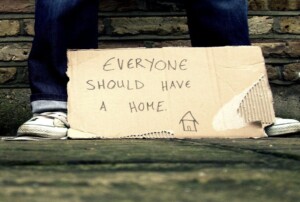
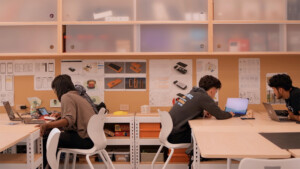
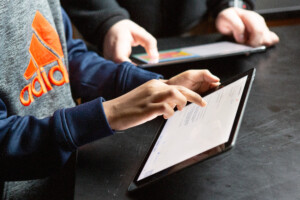
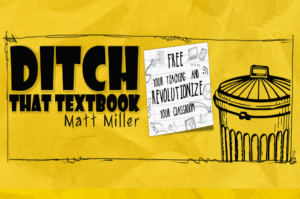
Bryan Setser
Alta vista version of wearables Tom - just the start - can use the Glass for courses or modules synchronously via a variety of social, mobile, and bug in the ear methods. With the emerging space of wearables, IRIS connect, and Google Glass, these modules are easily interchangeable with multiple blended learning pedagogies and supports (tutoring, re-teaching, test preparation, etc.)